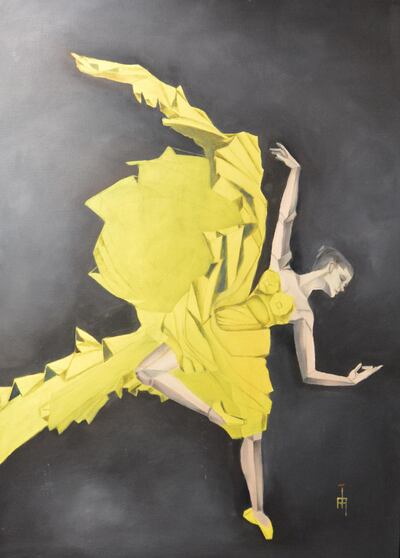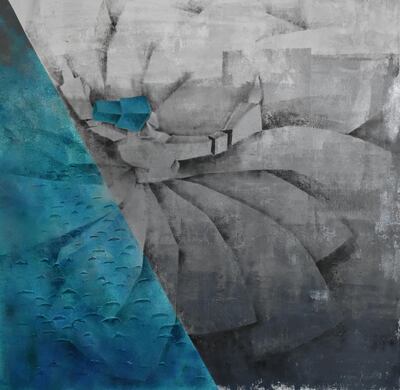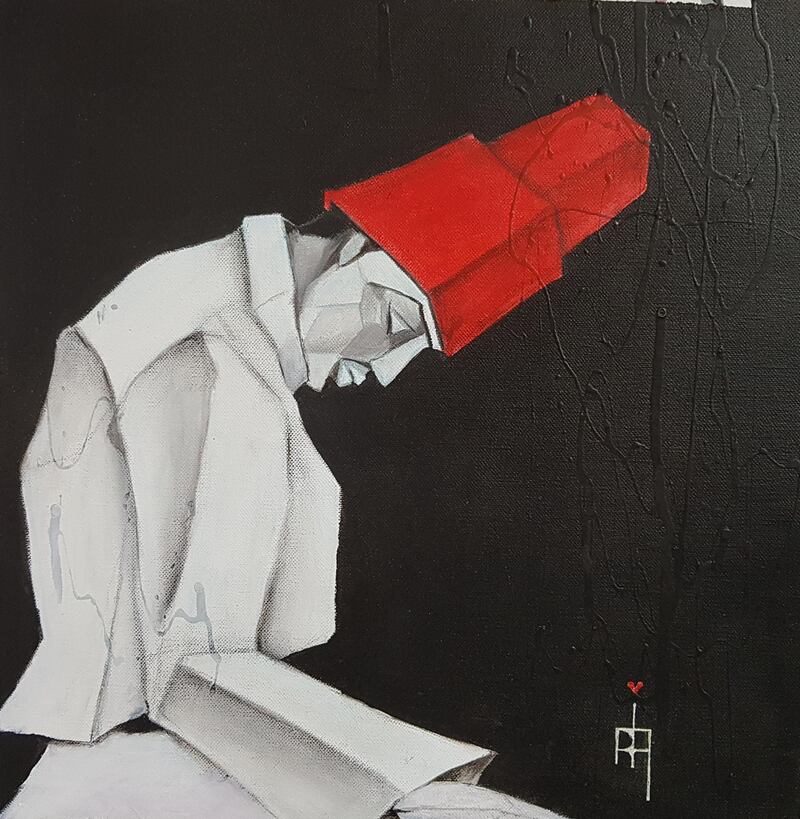Before Ria Sharma became a full-time artist, she worked as a civil engineer. On the face of it, this is a perplexing career move: the logic and precision required of an engineer seems to be at odds with the expressive freedom enjoyed by an artist.
But Sharma, whose paintings are on display at the Al Qasimi Foundation in Ras Al Khaimah, disagrees. “If it wasn’t for my background in civil engineering I wouldn’t look at an object as a combination of different elements and understand how to fit them together,” she says.
Certainly if you look at Sharma’s densely coloured, beautifully textured acrylic paintings, you can see the remnants – heavy blocks, sharp angles and bold lines – of her earlier career. There is a geometric quality to her work which recalls the Cubists (Sharma describes her style as “Cubism-Constructivism” and names Pablo Picasso and Georges Braque among her influences). “In my artworks, objects are analysed, broken up and reassembled in an abstracted form,” she says.
This is not to say that they are static, however. There is a real feeling of energy in, for example, The Search Within, which depicts a Whirling Dervish from different angles. "I like painting things that have momentum, that have speed – a running horse or a dancing ballerina," Sharma says.
The Whirling Dervish also nods to Sharma's preoccupation with Sufism, something which inspires much of her work. One of the most impressive paintings in her second solo show depicts a Sufi wearing a red hat, his head bowed in meditation. It is a quiet, almost mournful, image. "I believe that the true realisation of a person's identity lies in achieving a higher consciousness," Sharma, 43, said in an interview last year. "This is beautifully reflected in the Sufi tradition of the Whirling Dervishes whose rhythmic movement frees them from all worldly influences taking them into a deeply meditative state. A similar state is experienced by those who truly immerse themselves in their passion for music, dance or art."

Truly immerse yourself in Sharma’s paintings and you will see that she uses unlikely materials such as glass balls, fibre and sand in order to create certain textures and to make the canvases bumpy and tactile. “The artists that attract me are the ones whose techniques I don’t understand,” she says. “What colours are they using? What strokes have they used to get that particular effect? And so I started experimenting with the techniques I used in the background of my paintings. I want that curiosity to transfer to my audience.”
Sharma was born and raised in the Indian city of Pune. Her father is a doctor – “he thinks practically” – and Sharma believes her creativity comes from her mother. “She would make everything by hand,” she says. “She would teach me how to put buttons onto a dress.” After leaving school, Sharma studied engineering at university in Pune. In 2000, she moved to the United Arab Emirates, where she worked for 14 years at leading construction firms. “I was too focused on my career,” she says. “I wasn’t paying attention to the fact that I needed a challenge beyond technology, beyond being a high-flyer.”
It was only after a chance conversation with her young daughter, however, that Sharma decided to swap the corporate world for a life surrounded by paints, canvases and brushes. “When my daughter was six years old, she told me she wanted to learn art,” she says. “And I said, ‘What is there to learn? Here are some pencils, start sketching.’ But she insisted she needed a teacher, so I arranged an art class with three or four other kids.
“The next time I came home from the office, they were all having a lesson, and I just couldn’t help myself joining in. I realised that sketching and painting was the best stress-reliever. I thought, ‘You stupid thing, you love art and have only found out thanks to your daughter.’”

Now Sharma, who was shortlisted for the Global Art Awards this year, wants to encourage others to indulge their creative sides. One of the highlights of her show in Ras Al Khaimah is a display of crude sketches alongside the basic tools Sharma used to make them. “I brought my drawing board, which has been my companion since college, as well as a few random sketches,” she says. “Many of the sketches are nothing but scribbles on my ‘To-do’ list or on the back of a shopping list. But this display has turned out to be an excellent way of involving visitors.”
And who knows, perhaps Sharma's exhibition will inspire another civil engineer to ditch the suit and pick up overalls.
Trance to Eternity: Cubism in Motion is at the Al Qasimi Foundation in Ras Al Khaimah until October 6. For more, visit www.alqasimifoundation.com
______________________
Read more:
Omar Kholeif unveils his Sharjah Biennial plans after leaving MCA Chicago
Tom Young's Grand Sofar Hotel exhibition harks back to Lebanon's golden age
Review: Remnants, Green Art Gallery, Dubai: 'thematically knotty and immensely rewarding'
______________________






